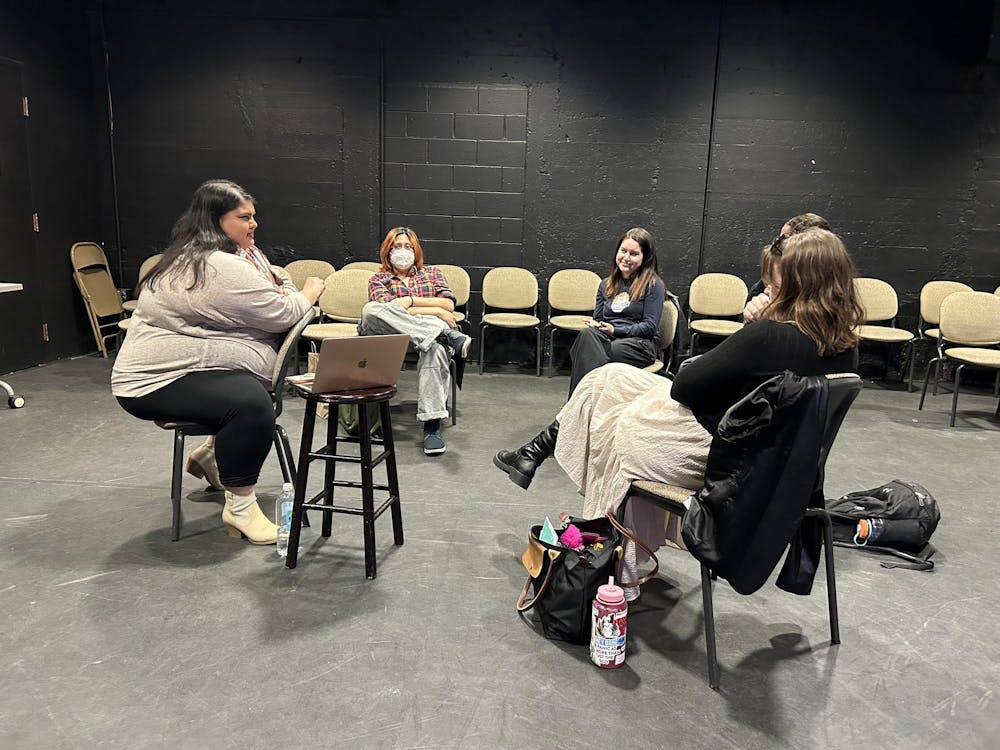If you skip TAPS 1280W: “Native American Indigenous Theatre Performance,” your instructor will definitely notice.
Taught by third-year MFA student Tara Moses, the class has only four enrolled students on Courses@Brown.
According to Brown’s admissions website, 69% of undergraduate classes have fewer than 20 students. But some undergraduate courses offered this semester, like TAPS 1280W, have fewer than five students enrolled. The Herald spoke with the students and instructors of four small classes about their experiences in such classroom environments.
According to Moses, TAPS 1280W is a “deep and wide exploration into contemporary Native American theater.” The four students are learning about the contexts, frameworks and relationships to political activism that underpin Native American and Indigenous plays and theatrical performance.
Moses is excited about “having the opportunity to share … contemporary, living Native artists” with students, especially “since we’re in a very exciting time nationally,” for Indigenous art, she said, highlighting the fact that some “theaters are programming their first-ever plays by Native people.”
“I was building (the syllabus) with the understanding that there are some folks who may never have engaged with any kind of Native art,” Moses explained. She added that, given all students this year are Indigenous, she now can tailor the syllabus to their experiences and interests.
Ava Scherlag ’24 decided to enroll in TAPS 1280W because she is from the Choctaw Nation of Oklahoma and interested in Native American-related courses.
Scherlag told The Herald that, due to the small class size, she is “better able to connect with the other students and professor.” The class feels “more like a conversation and more like my thoughts are more valued,” she added.
Wenyu Liu ’25 is one of two students enrolled in Professor of Physics Richard Gaitskell’s PHYS 1560: “Modern Physics Laboratory.” The class allows students to carry out four physics experiments, which may include “gamma ray spectroscopy” and “electron paramagnetic resonance,” according to the class syllabus.
Liu decided to take the course because he “felt like it might be a good idea to get some systematic training on how to do experiments and how to design (and analyze) systems,” he said.
Because there are only two students in the class, Liu said that he has more freedom to ask many questions, beyond having greater opportunities to pursue experiments that correspond to his interests.
But Liu highlighted one downside to small classes: “When you cannot make it to the class, it’s pretty embarrassing because there’s only two people there.”
Gabrielle Steinbrenner ’25 is one of two students enrolled in GRMN 1340Y: “Germans and Jews,” taught by Susan Bernstein, professor of comparative literature and German studies.
According to its syllabus, GRMN 1340Y explores the “fraught relationship” between German people and Jewish people through various thematic lenses, with texts spanning from the Enlightenment to the mid-20th century and from various genres.
Because the class is so small, “there is an expectation and a pressure to do the work and prepare for class which is good for me, honestly,” Steinbrenner said.
“Obviously, each one of us individually holds a lot more weight in the conversation,” she said. “In a larger classroom, you learn from the people around you quite a bit and not having that can be a bit unfortunate.”
Robyn Price, a postdoctoral research associate in archaeology, teaches ARCH 1515: “The Fair Sex: Female Body and Sexuality in the Ancient World,” which has four enrolled students according to Courses@Brown.
Price developed ARCH 1515 because she is interested in “bringing history up into the contemporary world,” she said. The course uses a “multi-form” lens to analyze gender, sexuality and representations of women in ancient Egypt and how such narratives change over time, according to the syllabus.
Price also noted how teaching a small class gives her “the flexibility to make (content) changes to keep the course within the core interests of the students in the class.”
Malcolm Certain ’26, a student in ARCH 1515, said that the course “feels a little more approachable” than a larger class.
“When (you’re in) a lecture of above a hundred people, you don’t want to hold up (other) people’s learning for your curiosity,” Certain said. “But when it’s three other people, it feels kind of natural to go off what the professor is saying and have this kind of mix of discussion and lecture.”

Kate Rowberry is a senior staff writer at The Herald.





